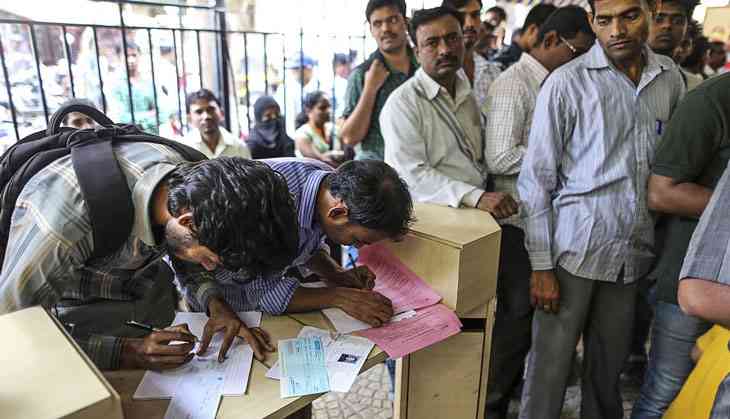Levying charges for cash withdrawals is almost like a sin tax. Here’s why

While the proposed charges on cash withdrawals above a certain limit ATMs by four leading banks in the name of encouraging cash economy is something like a tax on small traders, the main goal of the banks is to protect their profit margins through other income.
But struggling to find takers for credit, banks are being forced to rely more on other forms of income to maintain profitability. The recent announcements by four banks – State Bank of India (SBI, ICICI Bank, Axis Bank and HDFC Bank - to levy charges for cash and ATM withdrawals is just one more step in that direction.
The way things are moving, it seems that more banks will follow suit. For banks it is about savings its profit margins as they are being unable to generate enough interest income due to bad lending.
It also suggest that post-demonetisation, banks want to keep a tab on withdrawal of money from low cost deposits – savings and current accounts.
However, the banks have maintained that it is only a measure to discourage cash transactions in the economy.
As the proposal stands, customers of ICICI Bank, Axis Bank and HDFC Bank will have to pay minimum Rs 150 for cash transactions beyond the free limit.
Savings bank account holders of SBI will be able to make three free cash transactions in a month. It has also increased charges if customers fail to maintain minimum balance in account. On 6 March, SBI also increased the minimum account balance from Rs 500 to Rs 5000.
The sobering reality
Traditionally, taxes or charges are always levied on products or services that are considered ‘sinful’ – something that is not good for the economy, environment or consumer.
By that same logic, cash transactions would now qualify as a sin.
Among those who will be impacted the most are rural and small traders, small-scale industries and the like. The proposed charges will only add to their rural India’s hardship, which, unlike urban India, has still not been penetrated fully by mobile phones and internet connections.
Which makes it fair to say that the charges that limit the number of cash transaction sound like tax on rural Indians.
As per RBI data as on 31 December 2016, there is Rs 95,078 crore in current accounts - which translates into 8.9% of the total deposits of Rs 106 lakh crore in banking system. Savings deposits stand at Rs 33.93 lakh crore or 32% of the total deposits.
Putting the things in perspective, 40% of the money with banks is known as demand deposits. In simple words, a customer can walk in to bank branch or an ATM to withdraw the money and bank has to oblige by honouring demand of its customer. These demand deposits are essentially parked in current account and savings account.
But the penetration of ATM in most of rural India is still very low - RBI data shows that only 20% of the 2.15 lakh ATMs in the country are in rural areas. Roughly 11% (or Rs 11.46 lakh crore) of the total deposits with banks are from rural area.
The largest organisation of traders in the country, the Confederation of All India Traders (CAIT), has opposed these proposed charges and written a letter to the Reserve Bank of India (RBI), requesting the regulator to intervene in the matter.
Banks protecting margins
With decade-low growth in bank credit and highest ever level of non-performing assets, banks are now targeting non-interest based income. On every Rs 1 deposit from its customers, banks have to earn some amount of interest to sustain its operations.
In recent past, net interest margins (NIM, or interest earned on loans minus interest spend on deposits and borrowed funds) of banks have declined.
As per Care Ratings report, NIM growth in October-December quarter of 2014 was at 8.1% that has come down to just 3.4% for banks in India. In terms of public sector banks NIM growth has declined to -0.8% in 2016 compared to growth of 4.6%.
In comparison, private sectors banks are faring better. For private sector players, NIM growth in 2014 was 17.5%, higher than 11.5% reported in 2016.
Total provisions and non-performing assets (loans where principle and interest are not being paid back by borrower) are also rising.
These factors all contribute to why banks are now focusing on income from other sources.
Typically, other income includes treasury gains (profit on buying and selling of investment in shares and bonds), service charges from customers (on use of bank account, deposits, ATM, issue of cheque books) and fees on sale of insurance or other third party products.
This income has only seen growth over the past few years - compared to 27.6% in 2014, growth of other income for banks in India increased to 43.8% in October-December quarter of 2016.
Edited by Aleesha Matharu
First published: 6 March 2017, 22:57 IST
